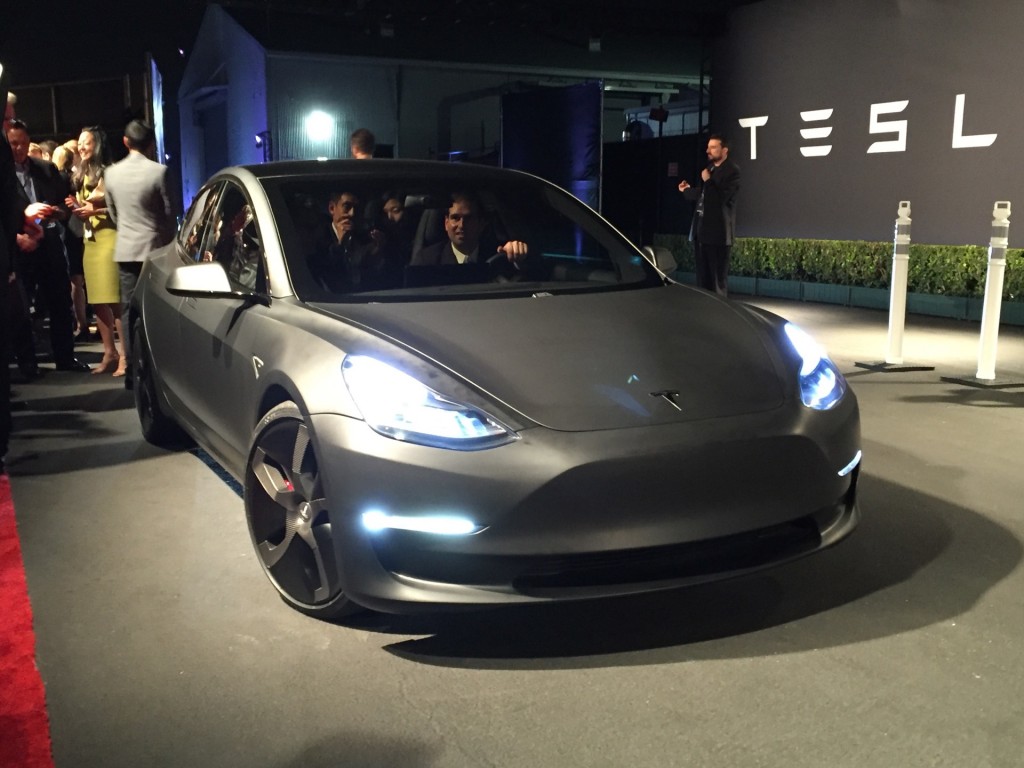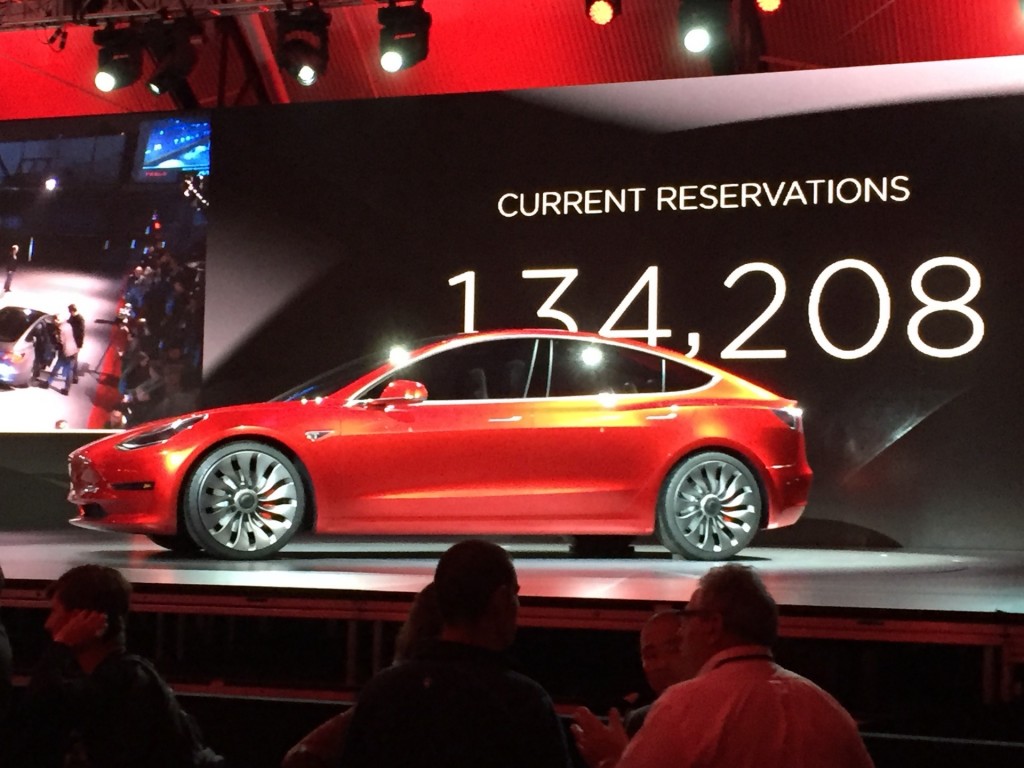The Tesla Model 3 electric car is undoubtedly one of the most highly-anticipated new-car launches in recent memory.
Unveiled in prototype form last April after a drawn-out teaser campaign, the Model 3 quickly generated an unprecedented response from the public.
As of last August, around 400,000 people had put down refundable $1,000 deposits, despite most not having seen the car in person.
DON'T MISS: Tesla Model 3: 215-mile, $35,000 electric car revealed (Apr 2016)
With a promised base price of $35,000 (before federal, state, and local incentives) and an estimated range of 215 miles or more, the Model 3 follows the Chevrolet Bolt EV as the second mass-market, long-range electric car.
That base price—about half that of the least-expensive current Model S—will make the Model 3 crucial to meeting Tesla's goal of building 500,000 cars annually by next year.
Almost a year after the unveiling of the Model 3 prototype, however, we still don't know too many details about Tesla's affordable electric car.

Tesla Model 3 design prototype - reveal event - March 2016
The version shown last year featured styling similar to that of the Model S—although because that car was labeled a design prototype, some styling elements may change.
Unlike the Model S, the Model 3 will have a rear trunk rather than a hatchback, although it will similarly have a front trunk (which Tesla owners affectionately refer to as a "frunk").
It will be offered with standard rear-wheel drive or optional dual-motor all-wheel drive, again, like the larger Model S.
ALSO SEE: Tesla Model 3: video of first ride in prototype $35k electric car (Apr 2016)
However, the Model 3 will only offer seating for five, as the pair of rear-facing third-row seats available on the Model S will not be available.
A noteworthy feature of the prototype Model 3 interior was a central dashboard display screen in place of a traditional gauge cluster located in front of the driver.
Tesla CEO Elon Musk subsequently hinted that the larger horizontal screen did not represent the final configuration of the Model 3 dashboard, and that the production version will be set up differently.

Tesla Model 3 design prototype - reveal event - March 2016
Differing from other electric cars in its price range, including the Bolt EV and next-generation Nissan Leaf, the Model 3 is expected to target German luxury sports sedans like the BMW 3-Series and Audi A4.
That means the Model 3 should feature nimble handling and quick acceleration, although Tesla has not released any performance figures.
Like the Model S and Model X, expect Tesla to offer multiple versions with different battery-pack sizes, and possibly "P" performance variants with Ludicrous mode.
MORE: Tesla Model 3: speculating on versions, batteries, prices, power (Mar 2016)
The Model 3 will feature DC fast-charging capability, using Tesla's own Supercharger standard.
Model 3 owners will have to pay a fee for use of Tesla's public Supercharger stations, under a new policy initiated by Tesla at the beginning of this year.
Tesla plans to start Model 3 production later this year, although the automaker has not yet made any of its initial deadlines for new-car launches so far.

Tesla Model 3 design prototype - reveal event - March 2016
The timeline for ramping up production is also quite ambitious.
On the May 4 analyst conference call following release of Tesla's first-quarter 2016 earnings, Musk said production would start in July, and that Tesla would build at least 100,000 Model 3 sedans by the end of the year.
CHECK OUT: How many Tesla Model 3 electric cars can company build this year?
Keep in mind that Tesla only built 84,000 cars last year, and delivered 76,000, missing a sales goal of 80,000 to 90,000 that had been lowered from an initial 2016 goal as high as 100,000.
Given the volume of Model 3 reservations, it seems likely that, if even a major percentage of depositors convert to buyers, the most recent to sign up may not receive their cars for up to two years.
_______________________________________________












